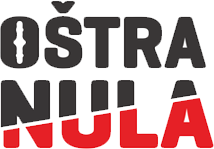The Aero Club “Rudi Čajavec” was established shortly after World War II and was named after the famous partisan pilot Rudi Čajavec. Some claim the club started its operations in 1946, while others say it was in 1948. The club had four sections: gliding, parachuting, model making, and powered flight. Banja Luka pilot and journalist Željo Šarić served as the club’s secretary in 1978.
Banja Luka modeler and club member Mirko Bjelajac became the Yugoslav champion in the indoor model category in 1962 and achieved notable results with the national team at European model championships.
Club member and parachutist Viktor Kupljenik had a career total of 6,134 jumps. As a member of the Yugoslav national team, he won a silver medal at the World Championship in Bled in 1970. Another member of the club, Banja Luka native Ivo Čavar, was the Yugoslav champion in both piloting and gliding.
Throughout its history, the club organized the “Cup of the First Partisan Pilots” since it was Rudi Čajavec who, on May 23, 1942, flew a Brege 19 aircraft from the Banja Luka airport in Zalužani to defect to the partisans.
Banja Luka resident Ljubomir Pranić shared a photograph with us of Nevenka Nena Ličina, the first female parachutist to jump over Banja Luka. This jump is tied to an interesting story. The pilot of the PO-2 biplane, Radomir Bujić, was seated in the pilot’s seat behind Nena, while Nena, in order to climb onto the wing of the plane and jump from it, sat in front.
Interestingly, the club’s management was initially located in the Blue Cellar, across from the Hotel Palas, in the building where a jewelry store and the Banja Luka Tourist Organization are now situated.
One of the club’s presidents was Ćamil Đevenica. He was a participant in the NOB and a retired colonel.
The building that housed the club was used as an Ustasha station during World War II. The memorial plaque, which still exists, states that Banja Luka revolutionaries and communists Milan Radman, Jozo Nemec, Ante Marinić, Ivica David, and Zvonko Odić escaped from this building in 1941, taking weapons with them.
After the war, during the 1990s, the Aero Club “Rudi Čajavec” changed its name to “Sveti Ilija,” and the building is currently in a state of ruin.



